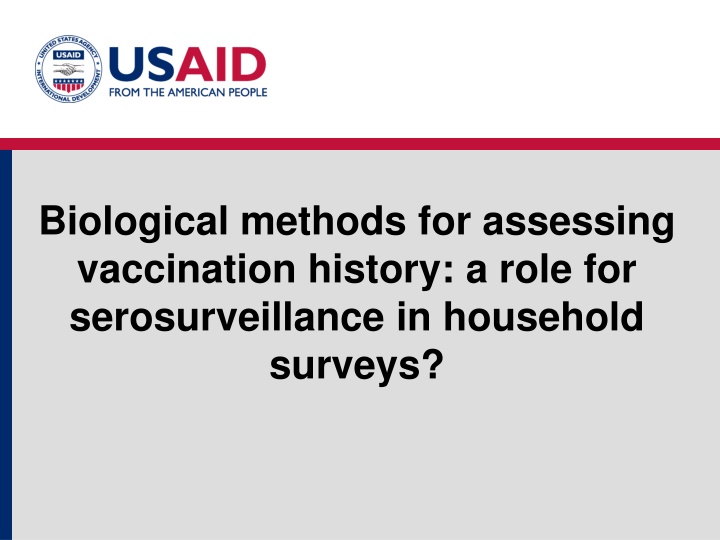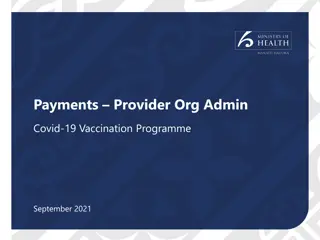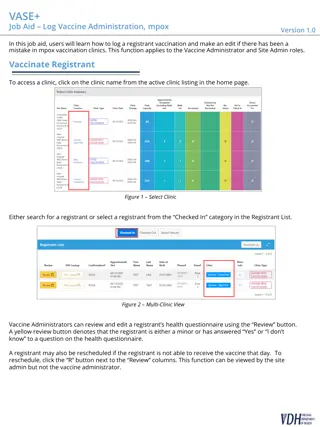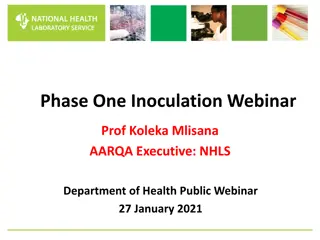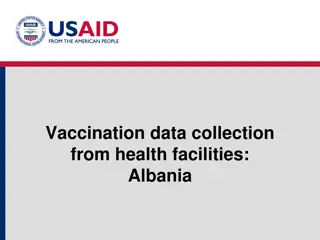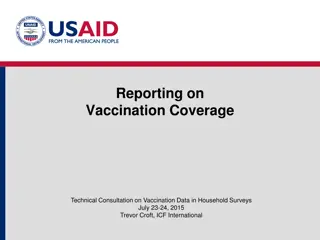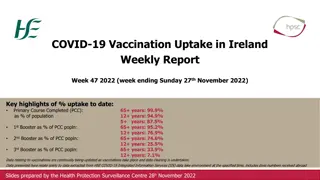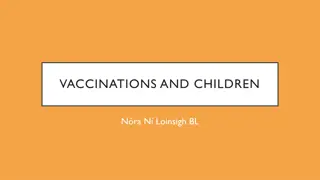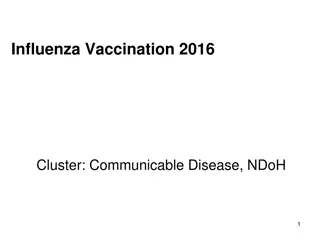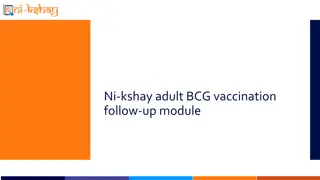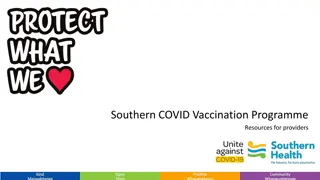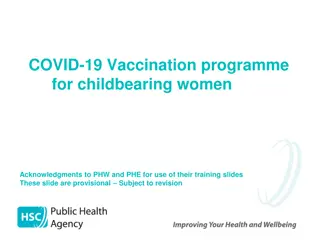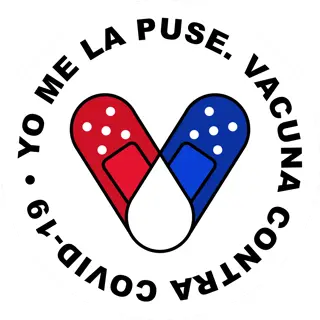Role of Serosurveillance in Assessing Vaccination History
This presentation discusses the use of serosurveillance in household surveys to supplement vaccination data collection by testing for biomarkers indicative of vaccination history. It explores the ideal biomarker for vaccination, differences between serosurveillance and vaccination coverage, limitations of serosurveys in determining vaccination status, and considerations for assessing vaccination history using serologic biomarkers. The importance of sensitivity, specificity, and predictive values in classifying vaccination history accurately is also highlighted.
Uploaded on Sep 20, 2024 | 3 Views
Download Presentation

Please find below an Image/Link to download the presentation.
The content on the website is provided AS IS for your information and personal use only. It may not be sold, licensed, or shared on other websites without obtaining consent from the author.If you encounter any issues during the download, it is possible that the publisher has removed the file from their server.
You are allowed to download the files provided on this website for personal or commercial use, subject to the condition that they are used lawfully. All files are the property of their respective owners.
The content on the website is provided AS IS for your information and personal use only. It may not be sold, licensed, or shared on other websites without obtaining consent from the author.
E N D
Presentation Transcript
Biological methods for assessing vaccination history: a role for serosurveillance in household surveys?
This presentation borrows heavily from: MacNeil, Lee, and Dietz, Vaccine, 2014 Ray Sanders presentation from the Global Meeting on Immunization Monitoring and Surveillance that took place in October 2012 at PAHO. DHS surveys already collect blood samples from adults and children. Why not supplement the vaccination data collected during the woman s interview by testing for presence of a biomarker indicative of vaccination? e.g., Madagascar 2003-04, DR Congo 2013-14, and Mozambique (ongoing)
The Ideal Biomarker A biological indicator directly associated with vaccination history that could be assessed objectively by the survey implementer. Visual biomarkers (vaccine-induced scarring) Serologic biomarkers (antibody to a vaccine component) An ideal serologic biomarker of vaccination: The presence of an antibody titer to a vaccine component that is an indicator of history of vaccination with a specific number of doses of the vaccine. Unfortunately, the ideal does not currently exist.
Serosurveillance and Vaccination Coverage: Not the Same Thing A serosurvey assesses population immunity. A vaccination coverage survey assesses the proportion of a population that received a specific vaccine dose or doses. Before expanding a survey to include serosurveillance, it s critical to define the exact question(s) being asked.
A serosurvey CANNOT necessarily tell you whether or not a person was vaccinated: Often not possible to distinguish natural infection of a vaccine-preventable disease (VPD) to an immune response induced by a vaccination. Exceptions: tetanus and hepatitis B A person could have been vaccinated, but the vaccination did not result in an immune response. e.g. MCV administered at 9 months results in 85-90% seroconversion; if serosurvey were used to assess vaccination history, it would erroneously conclude 10-15% of children were not vaccinated. Vaccine-induced immune responses may wane over time. Live vaccines (measles) vs non-replicating (tetanus)
Non-replicating vaccines require multiple doses, and sometimes booster doses, to ensure a protective immune response is generated and maintained. e.g., DPT 3 dose regimen in first year of life but serologic measures predictive of 3 dose coverage are limited. Sensitivity, specificity, predictive value positive (PVP), and predictive value negative (PVN) of the serologic biomarker in correctly classifying vaccination history must be considered Sensitivity and specificity are affected by the test. PVP and PVN are affected by overall immunization coverage of the population.
Our questions What is gained by including serosurveillance in a household survey? How would the data be used? For which VPDs is it possible to distinguish natural infection from vaccine induced immunity? What tools are available to test for VPD immune status? Are they commercially available? What do they cost? A focus of DHS is capacity building. As much as possible, testing is done in country. What type of lab infrastructure and skill sets are required to conduct a serosurvey?
Which populations are most appropriate to target for serosurveillance? What type of blood specimens are required for testing? DHS typically collects capillary blood (dried blood spots - DBS) Venous blood draws (for adults) are sometimes performed, but typically result in reduced response rates. When would it be appropriate to include serosurveillance in a survey? When would it not be appropriate?
